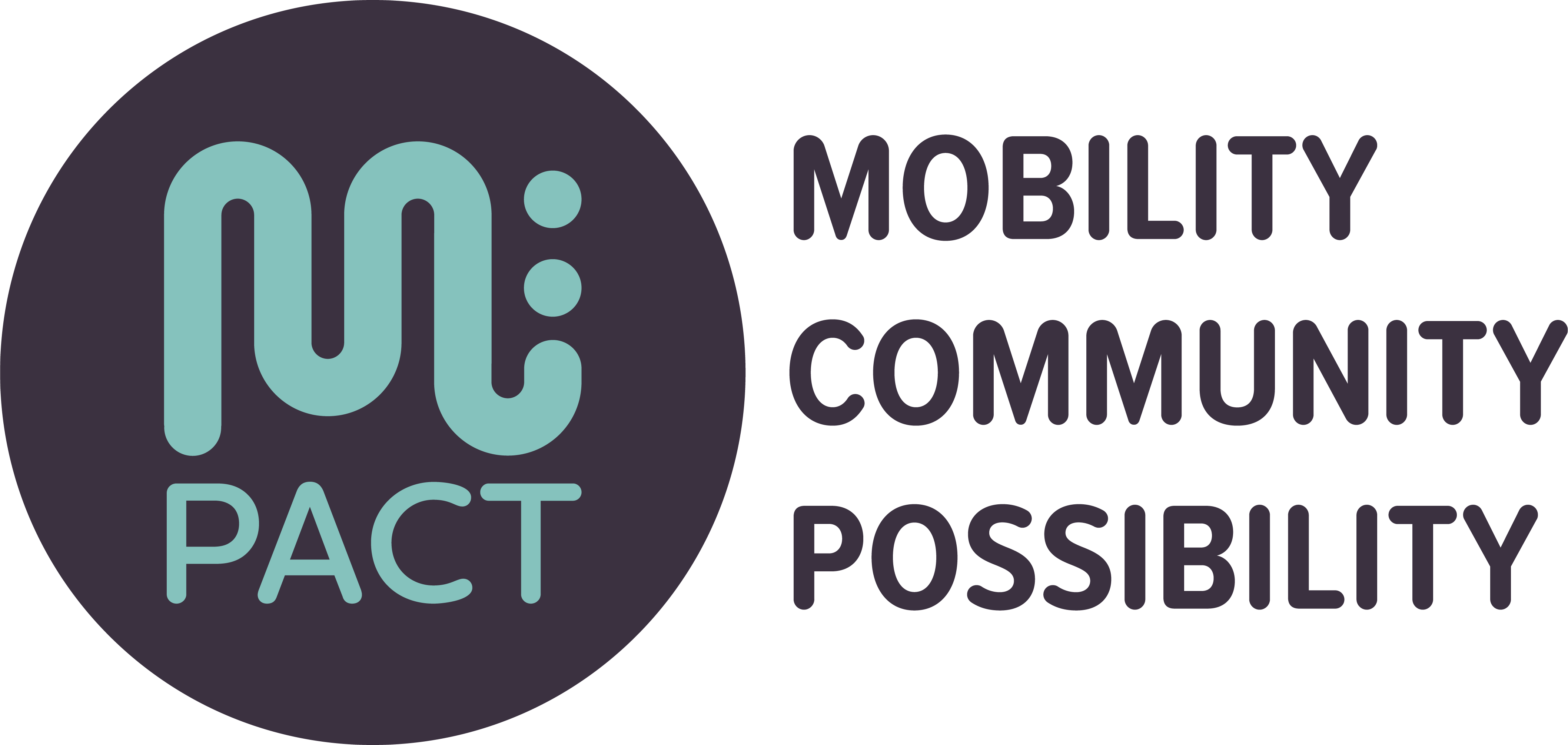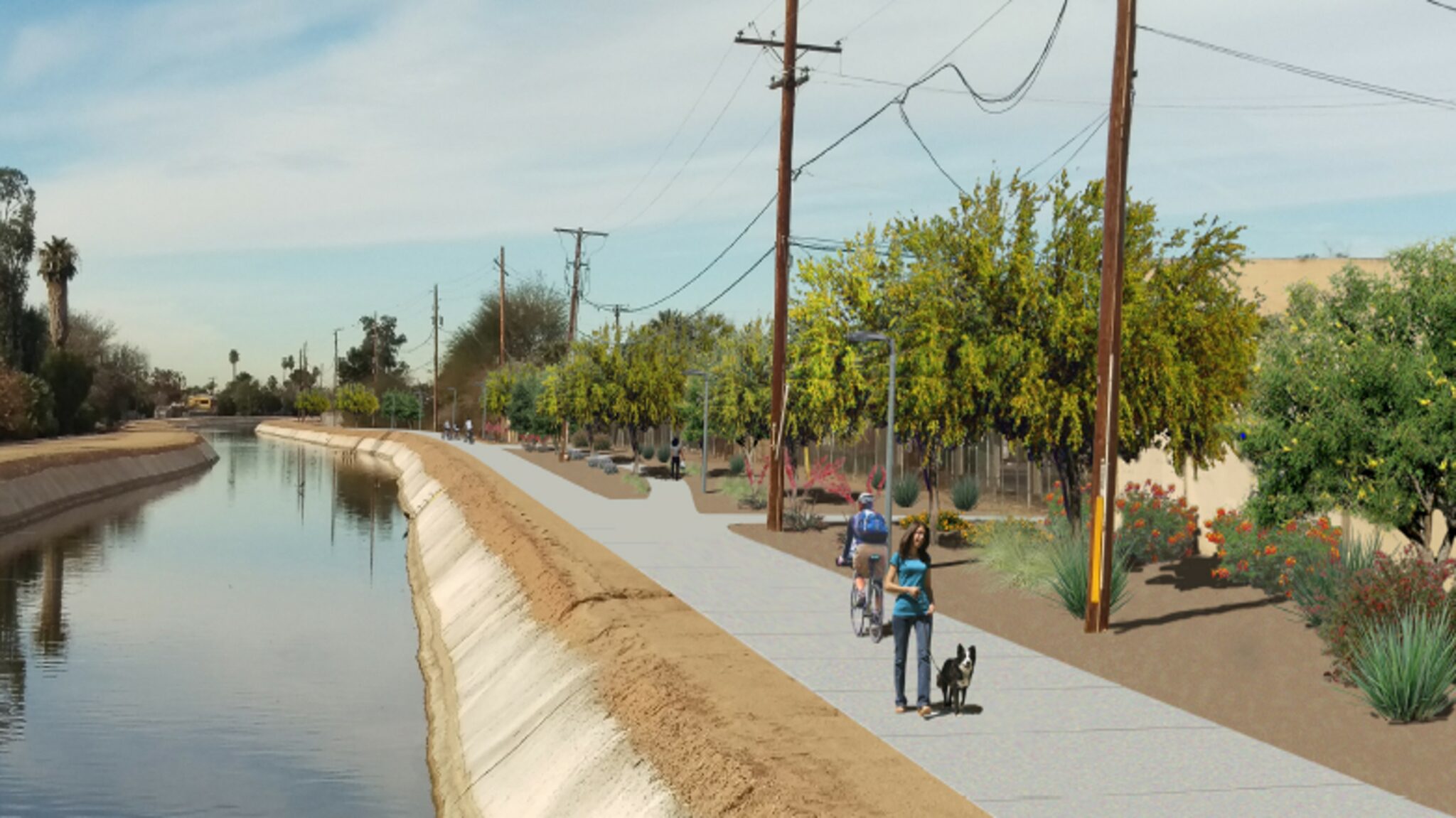Canals weave through metro Phoenix and provide residents of the Valley with year-round access to water. One-hundred eighty miles of canals bring water to 2.5 million people in the region. Managed today by Salt River Project (SRP) ,the canals primarily serve the crucial function of managing water but also have been a place for recreation, past and present.
FROM COTTONWOODS TO CONCRETE
Beginning around A.D. 200, the Hohokam people built around 250 miles of canals to irrigate thousands of acres of crops. The canals and crops they watered supported the growth of the population to twenty thousand people. However, this growth likely led to depletion of the soil and subsequent abandonment of the canals around AD 1400.

Public art project, A Deeper Map, allows people to compare the contemporary landscape of the Valley with its past.
Centuries later, the canals were retrenched and would become the foundation for modern day Phoenix. The region experienced an influx of people in the 1800s—soldiers from nearby Army forts and miners looking to get in on the gold rush. With the need to feed migrants, miners, and solders, ex-Confederate soldier, Jack Swilling, created the Swilling Irrigation and Canal Company in 1867 to dig out the canals and irrigate crops. Other canal building followed to support settlers in new communities across the Valley.
Floods ran wild throughout the Salt River so to manage it, a group of landowners created the Salt River Valley Water Users’ Association. In 1903, they secured a loan to construct a dam to create a reliable water supply. In 1917, they took on the management and operation of the Salt River Project, also known as SRP today.
As the city and region grew in the 20th century, the canals became a respite from the heat. The water was a place to swim and water ski and the cottonwoods lining the banks provided shade to relax. They became the social centers of neighborhoods in the Valley.
However, rapid development after World War II changed everything. New homes and buildings faced away from the canals and SRP lined them with concrete, preventing water loss, but at the cost of the cottonwoods. It was the end of an era.
THE GRAND CANALSCAPE
More recently, the City of Phoenix has started to reorient itself back to the canals. Completed in 2020, the Grand Canalscape project created “a 12-mile continuous, multi-use recreational trail system along the Grand Canal in Phoenix.”
The Grand Canalscape is one of many canal trails in the region. Check out this map of canal trails throughout the Valley.
Former traffic engineer for the City of Phoenix, Kerry Wilcoxon, says that the project sought to solve two major issues: pedestrian and bike crashes and the fragmentation of neighborhoods. Major improvements included paving dirt paths and installing signalized crossings to create a continuous path for users. Wilcoxon says, “With this project, we hoped to make the canalscape a real alternative to surface streets for people’s trips. Need to get groceries? Catch the bus? Walk along the canal instead of busy streets.”
Engineers and planners made transit a big part of the project, too. Wilcoxon explains that they wanted the Grand Canalscape to have connections both to the light rail and to bus service. The goal was to have a stop accessible by trail every quarter mile.
“Canals saw a huge increase in bike and pedestrian traffic during the pandemic,” according to Michael Pierce, transit planner for the City of Phoenix. The city has plans to similarly develop the Western Canalscape, with design anticipated to be completed this fall and construction beginning summer of 2024.
In the future, Wilcoxon hopes that these improvements lead to increased trips along the canal and to ‘canal-oriented development.’ The thought is that if you reach a certain threshold of trips, you will also see housing and business development that faces toward the canal instead of away from it. He cites one business already doing this—a taco truck serving people using the trail.
LEARN MORE
Want to learn about the Grand Canalscape firsthand? Join us this fall for Mpact Transit + Community (formerly Rail~Volution) and bike along the canals in Mobile Workshop 4 or 14: Grand Canal Multi-Use Trail. Check out the conference schedule for all the details on this workshop and more.




